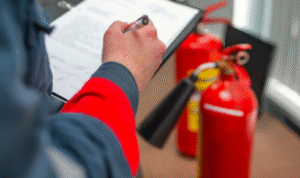The alternator is a critical component of a riding lawn mower’s electrical system, responsible for charging the battery and powering various electrical accessories. Knowing its location can help troubleshoot issues and perform maintenance tasks effectively. Let’s explore where you can find the alternator on your riding lawn mower.
1. Understanding the Role of the Alternator
The alternator is a device that converts mechanical energy from the engine into electrical energy, which is used to charge the battery and supply power to the electrical system of the riding lawn mower.
2. Importance of Proper Charging
A properly functioning alternator ensures that the battery remains charged, allowing the riding lawn mower to start reliably and power electrical components such as lights and accessories.
3. Identifying Components
Before locating the alternator, it’s essential to familiarize yourself with the various components of the riding lawn mower’s engine and electrical system, including the battery, starter, and wiring.
4. Checking the Engine Compartment
In most riding lawn mowers, the alternator is located near the engine, typically mounted on the engine block or attached to the flywheel housing.
5. Following the Drive Belt
The alternator is often driven by a belt connected to the engine’s crankshaft or flywheel. Follow the path of the drive belt to locate the alternator, which may be positioned near the belt’s route.
6. Consulting the Owner’s Manual
For specific information about the location of the alternator on your riding lawn mower model, refer to the manufacturer’s documentation, including the owner’s manual or service manual.
7. Exploring Under the Hood
Open the hood or access panel of your riding lawn mower to gain visibility into the engine compartment. Look for the alternator mounted on the engine block or adjacent components.
8. Checking Near the Flywheel
The alternator may be positioned near the flywheel, which is a rotating component connected to the engine’s crankshaft. Inspect the area around the flywheel for the alternator assembly.
9. Locating Near Electrical Components
The alternator is often located in close proximity to other electrical components, such as the voltage regulator or ignition coil. Check around these components for the alternator assembly.
10. Inspecting for Wiring Connections
Follow the wiring harness connected to the alternator to trace its location within the riding lawn mower’s engine compartment. Look for electrical connectors and wiring leading to the alternator.
11. Considering Different Designs
Depending on the make and model of your riding lawn mower, the alternator’s location may vary. Some models feature a side-mounted alternator, while others have a top-mounted configuration.
12. Exploring Maintenance Access
Accessing the alternator for maintenance or replacement may require removing engine covers, panels, or other components to gain clear access to the alternator assembly.
13. Checking Underneath the Mower
In some riding lawn mower designs, particularly those with overhead valve engines, the alternator may be mounted underneath the engine block or on the lower side of the mower chassis.
14. Examining Service Points
Service points, such as oil drain plugs or filter access points, may provide clues to the alternator’s location, especially if it is positioned in close proximity to engine maintenance areas.
15. Considering Manufacturer Variations
Different manufacturers may have unique designs and configurations for mounting the alternator on their riding lawn mower models. Consider the manufacturer’s design choices when searching for the alternator.
16. Seeking Professional Assistance
If you’re unable to locate the alternator or encounter difficulties accessing it for maintenance or repairs, consider seeking assistance from a qualified technician or lawn mower service center.
17. Avoiding Electrical Hazards
When working on the electrical system of your riding lawn mower, exercise caution to avoid electrical hazards. Disconnect the battery and follow proper safety procedures outlined in the owner’s manual.
18. Performing Regular Inspections
Regularly inspect the alternator and associated components for signs of wear, damage, or corrosion. Address any issues promptly to ensure the continued reliability and performance of your riding lawn mower.
19. Checking for Belt Tension
Ensure that the drive belt connecting the alternator to the engine is properly tensioned and aligned. A loose or misaligned belt can affect the alternator’s performance and charging capabilities.
20. Testing Charging Voltage
Periodically test the alternator’s charging voltage to verify its functionality. Use a multimeter to measure the voltage output while the engine is running to ensure that the alternator is charging the battery adequately.
21. Replacing Worn Components
If the alternator or drive belt shows signs of wear or damage, consider replacing them with genuine manufacturer parts to maintain optimal performance and reliability.
22. Understanding Electrical Connections
Familiarize yourself with the electrical connections and wiring associated with the alternator to troubleshoot potential issues effectively and perform maintenance tasks safely.
23. Following Manufacturer Recommendations
Adhere to the manufacturer’s recommendations for alternator maintenance, service intervals, and replacement schedules outlined in the owner’s manual or service documentation.
24. Keeping Records of Maintenance
Maintain detailed records of alternator maintenance, inspections, and repairs performed on your riding lawn mower to track its service history and ensure thorough upkeep.
25. Enjoying Reliable Performance
By understanding the location and importance of the alternator on your riding lawn mower, you can ensure reliable performance and prolonged service life for years to come.





